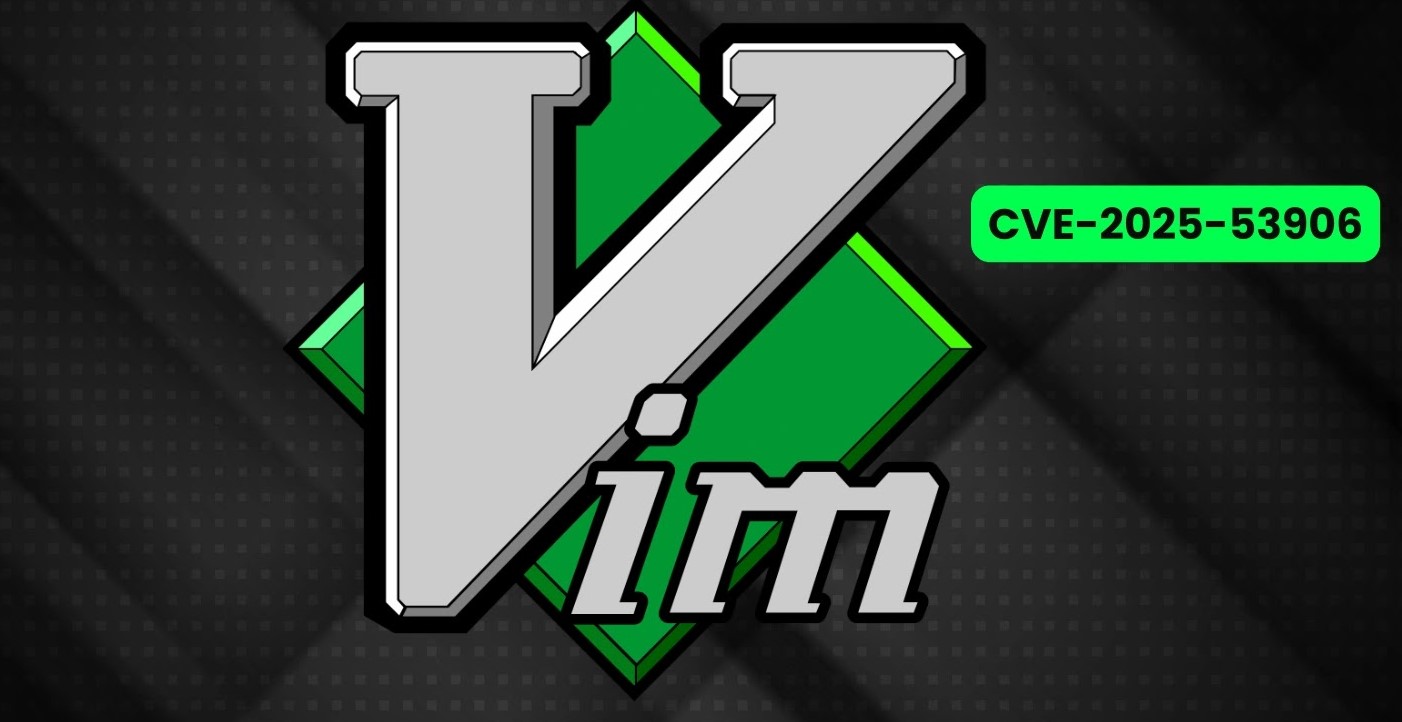
Vim Command Line Text Editor Vulnerability Let Attackers Overwrite Sensitive Files
In the intricate landscape of software development and system administration, tools like Vim are indispensable. Millions of developers and IT professionals rely on this powerful, open-source command-line text editor daily for everything from coding to configuration management. However, even the most trusted tools are not immune to security vulnerabilities. A critical flaw has recently surfaced in Vim, specifically within its zip.vim plugin, posing a significant threat to sensitive file integrity.
Understanding the Vulnerability: CVE-2025-53906
The vulnerability, formally tagged as CVE-2025-53906, targets the zip.vim plugin. This plugin is designed to handle zip archives directly within the Vim environment, a feature widely used for convenience in managing compressed data. The core of this critical flaw lies in its susceptibility to path traversal attacks.
A path traversal vulnerability, also known as directory traversal, allows attackers to access files and directories that are stored outside the intended directory. In the context of Vim’s zip.vim, this means that a specially crafted zip archive can trick the plugin into writing files to arbitrary locations on a user’s system, overwriting existing files with malicious content or placing new, unauthorized files. Imagine an attacker craftinga malicious zip file that, when opened in Vim, overwrites your .bashrc file, a critical configuration file for your shell, or even more sensitive application configurations.
How the Path Traversal Attack Unfolds
The attack vector is deceptively simple but devastatingly effective. An attacker creates a zip archive containing files with malicious filenames. These filenames are constructed using sequences like ../../ to navigate up the directory structure. When a user de-archives or even just previews the contents of this malicious zip archive using Vim’s zip.vim plugin, the plugin – due to the vulnerability – fails to properly sanitize these filenames. Consequently, it attempts to write the compressed files to locations outside the intended temporary or user-specified directory, potentially overwriting critical system or user files.
The implications of such an attack are severe:
- Data Corruption: Critical application data, configuration files, or even user documents can be corrupted or destroyed.
- System Compromise: Overwriting system binaries or scripts could lead to privilege escalation or complete system takeover.
- Malware Delivery: Attackers could place malicious executables or scripts in system-level paths, leading to persistent malware infections.
- Denial of Service: Overwriting essential system files could render the operating system or specific applications unusable.
Affected Users and Systems
This vulnerability affects users running Vim installations that include the zip.vim plugin. Given Vim’s widespread adoption across various operating systems – Linux, macOS, and Windows (via WSL or Gvim) – a substantial portion of the developer and IT professional community is potentially at risk. It’s important to note that the vulnerability resides within the plugin itself, meaning any Vim version utilizing the vulnerable zip.vim plugin is susceptible.
Remediation Actions and Mitigations
Immediate action is crucial to mitigate the risks associated with CVE-2025-53906. As an expert cybersecurity analyst, I strongly recommend the following steps:
- Update Vim Immediately: The primary and most effective remediation is to update your Vim installation to the latest patched version. Developers typically release patches swiftly for critical vulnerabilities. Check the official Vim website or your distribution’s package manager for updates.
- Disable or Remove
zip.vim(If Not Required): If your workflow does not heavily rely on thezip.vimplugin for direct archive manipulation within Vim, consider disabling or uninstalling it until a patched version is confirmed and available for your specific setup. - Practice Caution with Archives: Be extremely cautious when opening or managing zip archives from untrusted or unknown sources. Always scrutinize the contents of archives before processing them, ideally in a sandboxed environment.
- Regular Backups: Maintain regular and comprehensive backups of your critical files and system configurations. In the event of a successful attack, a recent backup can be invaluable for recovery.
- Use Secure Alternatives for Archiving: For sensitive archive handling, consider using dedicated, well-audited archiving tools outside of Vim that have robust security features and proper path sanitization.
Relevant Tools for Detection and Mitigation
While direct detection of this specific vulnerability in live exploitation might be challenging without specialized tools, general security hygiene and analysis tools can help in overall system protection and post-compromise investigation:
| Tool Name | Purpose | Link |
|---|---|---|
| ClamAV | Open-source antivirus engine for detecting malicious files, including potential payloads delivered via path traversal. | https://www.clamav.net/ |
| YARA | Pattern matching tool for identifying and classifying malware. Can be used to create rules for detecting specific file types or content. | https://virustotal.github.io/yara/ |
| File Integrity Monitoring (FIM) tools (e.g., OSSEC, Tripwire) | Monitor critical system files and directories for unauthorized changes, alerting security teams to potential tampering. | https://www.ossec.net/ (OSSEC) |
| Containerization/Virtualization | Running untrusted code or processing untrusted files within isolated environments (e.g., Docker, VMs) to limit blast radius. | https://www.docker.com/ (Docker) |
Conclusion
The discovery of CVE-2025-53906 in Vim’s zip.vim plugin serves as a stark reminder that security vulnerabilities can emerge in even the most widely used and trusted software. Path traversal attacks are particularly insidious due to their potential to overwrite arbitrary files, leading to severe consequences ranging from data corruption to full system compromise. Proactive patching, cautious handling of external files, and robust security practices are not merely recommendations; they are essential defenses in safeguarding your development environment and critical infrastructure.
Stay vigilant, stay updated, and prioritize security in every aspect of your digital workflow.





